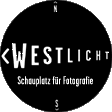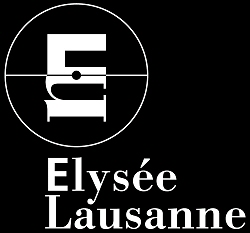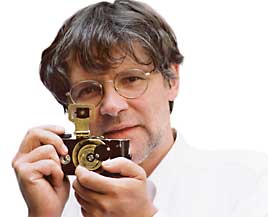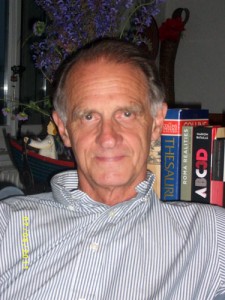 [Editor’s Note: William A. Ewing, recently retired as director of the Musée de l’Elysée in Lausanne, Switzerland, served in that capacity at that institution from 1996 through spring 2010. His tenure at the Musée thus included most of the period during which that institution housed the lion’s share of the European portion of the former Polaroid Collection, concluding by coincidence at the same time as the June 21-22, 2010 auction of selections from the Polaroid Collection at Sotheby’s in New York. An email exchange with Bill over my report on the acquisition of the Musée’s Polaroid Collection holdings by the WestLicht Schauplatz für Fotografie in Vienna, and that museum’s announcement thereof, led to my invitation to Bill to put certain matters on the record, thereby correcting gross misrepresentations made by Peter Coeln of the Westlicht project. — A.D.C.]
[Editor’s Note: William A. Ewing, recently retired as director of the Musée de l’Elysée in Lausanne, Switzerland, served in that capacity at that institution from 1996 through spring 2010. His tenure at the Musée thus included most of the period during which that institution housed the lion’s share of the European portion of the former Polaroid Collection, concluding by coincidence at the same time as the June 21-22, 2010 auction of selections from the Polaroid Collection at Sotheby’s in New York. An email exchange with Bill over my report on the acquisition of the Musée’s Polaroid Collection holdings by the WestLicht Schauplatz für Fotografie in Vienna, and that museum’s announcement thereof, led to my invitation to Bill to put certain matters on the record, thereby correcting gross misrepresentations made by Peter Coeln of the Westlicht project. — A.D.C.]
•
Dear Allan,
Thanks for the list of factoids. My own word is fracts, i.e., fractions of facts. Here is how I see the fracts.
 You are quite right to see the situation as a loss for the Musée de l’Elysée, of which I was director for 14 years. Here are some, um . . . facts: The collection was kept under the correct climatic conditions for 20 years. As the 4500 (more or less) prints took up a considerable amount of space, we were struggling more and more as other acquisitions mounted. I did a brief calculation the other day, trying to get a handle on what climatic-norm storage would have cost the owners all these years, if they’d had to cover it: If you take a minimal amount of, say, 7000 a month, you come close to two million over the twenty-year period (dollars, francs, whatever). And this does not include curatorial care, which is constant. So the museum did have a big “investment” in the collection.
You are quite right to see the situation as a loss for the Musée de l’Elysée, of which I was director for 14 years. Here are some, um . . . facts: The collection was kept under the correct climatic conditions for 20 years. As the 4500 (more or less) prints took up a considerable amount of space, we were struggling more and more as other acquisitions mounted. I did a brief calculation the other day, trying to get a handle on what climatic-norm storage would have cost the owners all these years, if they’d had to cover it: If you take a minimal amount of, say, 7000 a month, you come close to two million over the twenty-year period (dollars, francs, whatever). And this does not include curatorial care, which is constant. So the museum did have a big “investment” in the collection.
As you mention, Allan, the Musée de l’Elysée did organize several exhibitions in the last couple of years: two in Lausanne, one for the Rencontres in Arles. Both were big hits with the public and the press, and you are right to say that it was one of the best-received of all Arles shows last year.

Peter Coeln
I did the Lausanne show to raise awareness of the potential loss, hoping we’d find a saviour. It actually happened, partially, but the amount we found was not comparable to what Peter [Coeln of the WestLicht Schauplatz für Fotografie] was willing to offer. Frankly, I do get some solace from the fact that the section of the collection the Musée had remains intact — the worst would have been to have seen it auctioned off in pieces. I’m also pleased it will stay in Europe.
Now I’d like to deal with an issue which may raise some hackles. And that’s the quality of the collection. It’s a sensitive issue, but important to put on the table. The collection was not put together in the standard way — by curators picking and choosing individual pieces. Photographers gave work in return for free materials, and gave what they felt like giving. It is, frankly, very uneven; there are some great pieces at one end of the spectrum, and some godawful ones at the other.
Actually, the best individual works are often by lesser-known or even unknown photographers. The “name” photographers often are represented by lackluster work. Often they were just fooling around, trying things out, as in the case of Wegman. He was using the big-format camera experimentally, and didn’t quite get to where he wanted. So while it’s interesting to see how he was thinking, the results aren’t more than this — a trace of his process.
That’s all fine. It’s all about experiment. And that’s the richness of the collection. There are a lot of things that are interesting to look at (as with the Wegman attempts), but not what you’d want to see in a show. (If too much of the low-level stuff is shown publicly, people will say “Why bother saving it?”)
The shows I did in Lausanne and Arles were strong because I was distilling down from 4500 works to 250, more or less. I feel I could have held the quality at 350 works, but no more: after that the level of the show would have suffered. So to think that the whole collection is filled with masterpieces of Polaroid art is wrong-headed. This is one reason that major museums were leery of stepping in and taking the whole thing. They quite correctly (from a classic curatorial view) wanted to cherry-pick.

Impossible Project logo
The Elysée also did a big Polaroid show just as I was arriving at the museum. And between the two projects there was a constant use of individual works in shows we curated such as “The Century of the Body” in 2000, or “The Face: The Death of the Portrait” in 2004 and 5. So, personally, I resent the insinuation (fract) that the museum was letting the collection sleep. And a couple of years ago, we curated a one-man show of Andreas Rentsch’s Polaroids, very strong works. Incidentally, I told Florian Kaps [director of The Impossible Project] about them and asked him if Andreas could get free materials as in the old model, and Florian agreed. Meanwhile we bought work from Andreas — that will NOT be going to Vienna!
Incidentally, my friend Florian has chosen an inapt metaphor in speaking of dusty museums. The Elysée’s collection was housed in spaces which are under slight air pressure, so that when the doors are open, dust is expelled. Dusty we are not!
Of course, every museum wants to show everything they own. What did I read today in the New York Times, that the New York Public Library has 88 miles of archival materials? Why don’t they just build a gallery that would begin in Manhattan and finish in Philadelphia? You could visit the shows by high-speed train (in the US, that would be about 60 mph these days).
If the new owner can manage to display all 4500 works all the time, without degradation due to light, hats off to him! In Arles I needed one of the biggest galleries in town to show 250 works. So he’ll need to build a space more like the entirety of MoMA. Good luck to him!
I should add, for the record, that I am speaking as the ex-director of the museum, not for the museum today!
Regards, Bill
•

William A. Ewing, 2011
William A. Ewing is a curator, museum director and author. His exhibitions have been shown worldwide at such institutions as the Museum of Modern Art, New York; the Hayward Galleries, London; the Kunsthaus Zurich; the Centre Pompidou and the Jeu de Paume, Paris; and the Museo Reine Sofia, Madrid. In 2009 he was a curator of the New York Photo Festival. His books have been published by Harry Abrams, Rizzoli, Aperture, de la Martinere, Delpire, Contrasto, Skira, Steidl, and Thames & Hudson. They range from monographs (Blumenfeld, Steichen, Freed, Metzker) to extensive thematic projects, such as The Body, The Face, and reGeneration: Tomorrow’s Photographers Today. He is currently curating shows for the Foundation for the Exhibition of Photography, Minneapolis/Lausanne, and other organisations in Europe and America. He is also Director of Curatorial Projects for America, Europe and Asia at the publishing house Thames & Hudson.
Text copyright © 2011 by William A. Ewing. All rights reserved. Published by permission of the author.
•
For an index of links to all previous posts related to this story, click here.
Guest Post 8: Bill Ewing on Polaroid at the Musée de l’Elysée
•
Dear Allan,
Thanks for the list of factoids. My own word is fracts, i.e., fractions of facts. Here is how I see the fracts.
As you mention, Allan, the Musée de l’Elysée did organize several exhibitions in the last couple of years: two in Lausanne, one for the Rencontres in Arles. Both were big hits with the public and the press, and you are right to say that it was one of the best-received of all Arles shows last year.
Peter Coeln
I did the Lausanne show to raise awareness of the potential loss, hoping we’d find a saviour. It actually happened, partially, but the amount we found was not comparable to what Peter [Coeln of the WestLicht Schauplatz für Fotografie] was willing to offer. Frankly, I do get some solace from the fact that the section of the collection the Musée had remains intact — the worst would have been to have seen it auctioned off in pieces. I’m also pleased it will stay in Europe.
Now I’d like to deal with an issue which may raise some hackles. And that’s the quality of the collection. It’s a sensitive issue, but important to put on the table. The collection was not put together in the standard way — by curators picking and choosing individual pieces. Photographers gave work in return for free materials, and gave what they felt like giving. It is, frankly, very uneven; there are some great pieces at one end of the spectrum, and some godawful ones at the other.
Actually, the best individual works are often by lesser-known or even unknown photographers. The “name” photographers often are represented by lackluster work. Often they were just fooling around, trying things out, as in the case of Wegman. He was using the big-format camera experimentally, and didn’t quite get to where he wanted. So while it’s interesting to see how he was thinking, the results aren’t more than this — a trace of his process.
That’s all fine. It’s all about experiment. And that’s the richness of the collection. There are a lot of things that are interesting to look at (as with the Wegman attempts), but not what you’d want to see in a show. (If too much of the low-level stuff is shown publicly, people will say “Why bother saving it?”)
The shows I did in Lausanne and Arles were strong because I was distilling down from 4500 works to 250, more or less. I feel I could have held the quality at 350 works, but no more: after that the level of the show would have suffered. So to think that the whole collection is filled with masterpieces of Polaroid art is wrong-headed. This is one reason that major museums were leery of stepping in and taking the whole thing. They quite correctly (from a classic curatorial view) wanted to cherry-pick.
Impossible Project logo
The Elysée also did a big Polaroid show just as I was arriving at the museum. And between the two projects there was a constant use of individual works in shows we curated such as “The Century of the Body” in 2000, or “The Face: The Death of the Portrait” in 2004 and 5. So, personally, I resent the insinuation (fract) that the museum was letting the collection sleep. And a couple of years ago, we curated a one-man show of Andreas Rentsch’s Polaroids, very strong works. Incidentally, I told Florian Kaps [director of The Impossible Project] about them and asked him if Andreas could get free materials as in the old model, and Florian agreed. Meanwhile we bought work from Andreas — that will NOT be going to Vienna!
Incidentally, my friend Florian has chosen an inapt metaphor in speaking of dusty museums. The Elysée’s collection was housed in spaces which are under slight air pressure, so that when the doors are open, dust is expelled. Dusty we are not!
Of course, every museum wants to show everything they own. What did I read today in the New York Times, that the New York Public Library has 88 miles of archival materials? Why don’t they just build a gallery that would begin in Manhattan and finish in Philadelphia? You could visit the shows by high-speed train (in the US, that would be about 60 mph these days).
If the new owner can manage to display all 4500 works all the time, without degradation due to light, hats off to him! In Arles I needed one of the biggest galleries in town to show 250 works. So he’ll need to build a space more like the entirety of MoMA. Good luck to him!
I should add, for the record, that I am speaking as the ex-director of the museum, not for the museum today!
Regards, Bill
•
William A. Ewing, 2011
William A. Ewing is a curator, museum director and author. His exhibitions have been shown worldwide at such institutions as the Museum of Modern Art, New York; the Hayward Galleries, London; the Kunsthaus Zurich; the Centre Pompidou and the Jeu de Paume, Paris; and the Museo Reine Sofia, Madrid. In 2009 he was a curator of the New York Photo Festival. His books have been published by Harry Abrams, Rizzoli, Aperture, de la Martinere, Delpire, Contrasto, Skira, Steidl, and Thames & Hudson. They range from monographs (Blumenfeld, Steichen, Freed, Metzker) to extensive thematic projects, such as The Body, The Face, and reGeneration: Tomorrow’s Photographers Today. He is currently curating shows for the Foundation for the Exhibition of Photography, Minneapolis/Lausanne, and other organisations in Europe and America. He is also Director of Curatorial Projects for America, Europe and Asia at the publishing house Thames & Hudson.
Text copyright © 2011 by William A. Ewing. All rights reserved. Published by permission of the author.
•
For an index of links to all previous posts related to this story, click here.